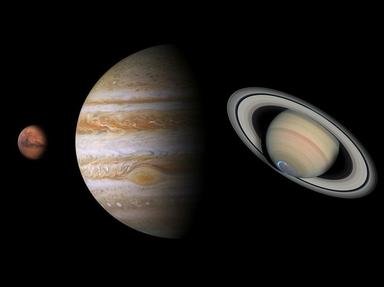
Order the Planets (and Other Heavenly Bodies) Quiz
Order the heavenly bodies, based on when they were first officially discovered, from earliest to the most recent.
An ordering quiz
by Joepetz.
Estimated time: 3 mins.

| What's the Correct Order? | Choices |
| 1. (Beginning of Time) | Kuiper Belt |
| 2. (1534 BCE (at the latest)) | Phobos |
| 3. (964) | Triton |
| 4. (1655) | Earth |
| 5. (1690) | Pluto |
| 6. (1846) | Titan |
| 7. (1846) | Andromeda galaxy |
| 8. (1877) | Mars |
| 9. (1930) | Uranus |
| 10. (1992) | Neptune |